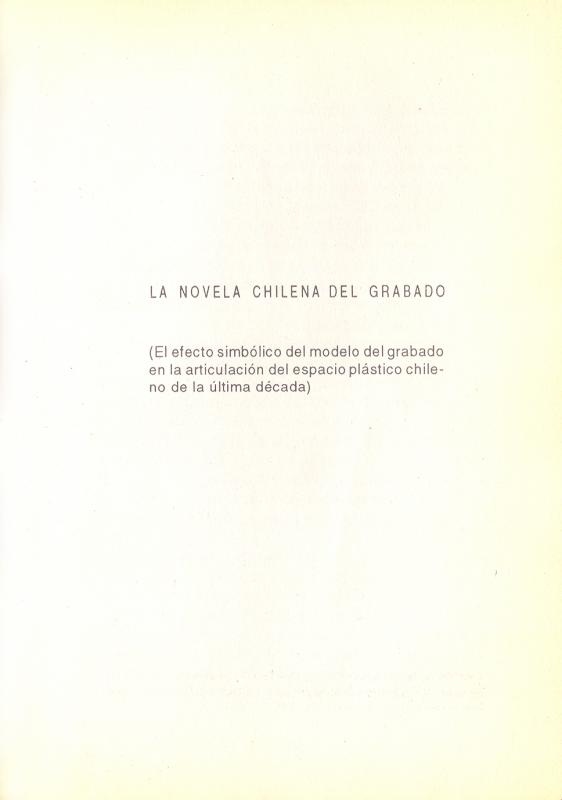The curator and art critic Justo Pastor Mellado (b. 1949) presented three interventions at the Seminario de interpretación de la coyuntura plástica (1983), the seminar hosted by the TAV (Taller de Arte Visuales). This final intervention was subtitled “Notas de lectura para servir a un ensayo sobre la coyuntura intelectual.” In the two previous versions he discussed key events in the Chilean visual arts, including the unofficial shipment of works to the 12th Paris Biennial [see the ICAA Digital Archive: “Intervención viernes 13 de mayo” (doc. 749169)] and Tránsito suspendido, the exhibition of works by Carlos Altamirano (b. 1954), an intervention related to the second part of the text that was published in the catalogue for that exhibition [see “Intervención viernes 20 de mayo” (doc. 749179)]. In this final intervention Mellado discusses the other authors who write about the visual arts, who are part of what he calls the “visual arts situation.”
In this text Mellado cites two types of discourse as examples: the discourse of Margen magazine, which he directed and which was active in the early 1980s, and the discourse favored by the theorist and cultural critic Nelly Richard (b. 1948) and the artist Eugenio Dittborn (b. 1943). Mellado considers their texts to be “polemical” because they endorse a fixed approach to contingency which therefore addresses writing in terms of “unity” and “struggle,” an open argument to graft readings onto the art field. This text, which was written early in his career (he is still active to this day) includes certain ideas that he discussed in greater depth almost a decade later in La novela chilena del grabado [The Chilean Novel About Printing] (1995). This book provides historical insights into Chilean art which claim that printing in its various forms must be taken into account in any criticism of the modernist painting that was the dominant style at the time. One of the concepts referred to in this essay (which was dealt with in detail in the book mentioned above) was “theoretical transference,” meaning the connections that facilitate the transfer of concepts between different fields of knowledge and historical moments, thus establishing a certain critical genealogy.
[For other chapters in La novela chilena del grabado, see “Un caso de producción de identidad artística” (doc. 736039); “La novela chilena del grabado”(doc. 736035); “Pequeña novela del grabado chileno” (doc. 736031), and “Las estructuras elementales de la transferencia” (doc. 736043.]






